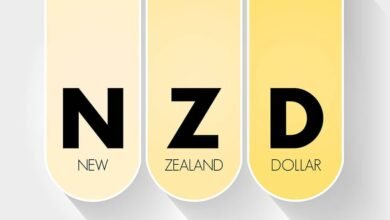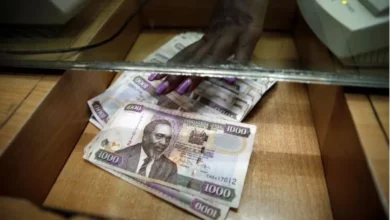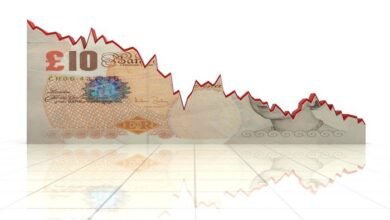Currencies Dip at Quarter-End in Light Trading Ahead of Holiday

(Bloomberg) — Emerging-market currencies fell for a second day Thursday, on track for the lowest close since Feb. 14, amid thin trading ahead of the Easter holiday in the Americas and the end of the quarter.
Most Read from Bloomberg
The Mexican peso and Brazilian real led currencies down, with the real weakening past the 5-per-dollar level. Colombia, Argentina and most Mexican markets are already shuttered for Easter.
“With the rest of Latin America closed, the pressure fell on those currencies that have some liquidity,” said Erick Martinez, a strategist at Barclays in New York.
Traders are cautious as they gear up for key inflation data in the US Friday after the latest remarks by Federal Reserve officials reinforced bets policymakers will be in no rush to cut interest rates.
Currencies are set to post a 1% loss for the quarter, even as a gauge of the greenback soared three times as much. Mexico’s peso, supported by record high interest rates, political stability and the so-called nearshoring trend, is the best currency out of 23 peers tracked by Bloomberg, strengthening over 2% in the last three months.
“What’s not to like about a currency like the MXN?” Brad Bechtel, head of foreign-exchange at Jefferies wrote in a note, citing a “good” macro story, high real rates and low volatility.
Though the main gauge for emerging-market stocks climbed, the sub-index for Latin America was little changed as appetite for riskier assets in global markets cooled off during the US session.
Bond Stars
Panama bonds slumped Thursday after Fitch downgraded the Central American country to BB+, one level below investment grade, citing fiscal and governance challenges.
Still, the bond market in general is closing the first quarter brimming with turnaround stories as investors walk away with hefty rewards from some of the world’s most vulnerable economies.
Dollar bonds from serial defaulters Ecuador and Argentina handed off the biggest returns in the last three months, as governments stepped up policy reforms. Egypt’s debt also posted eye-popping gains as the nation struck an agreement with the International Monetary Fund and won billions in dollar flows. Meantime, Zambia reached an agreement with holders of its Eurbonds, while defaulted debt from Sri Lanka and Ghana soared as the countries made progress in talks with creditors.
The push was such that the extra yield investors demand to hold emerging-market dollar bonds over similar US Treasuries shrank to the lowest in over two years. Access to capital markets returned to previously troubled nations such as Kenya, after Ivory Coast ended the dry spell for hard-currency bond sales in sub-Saharan Africa that lasted for almost two years.
Some of those one-off stories also helped the nations’ stock markets to outperform, boosting the broad gauge even as investors pulled money from China as geopolitical and policy risks escalated.
The star of the quarter was Taiwan Semiconductor Manufacturing Co., which accounted for most of the gains in the MSCI gauge amid demand for companies seen as riding the artificial-intelligence wave.
On the last trading day before Easter holidays, Ukraine’s dollar bonds posted the best performance in the developing world as investors awaited the latest economic-growth report.
–With assistance from Srinivasan Sivabalan.
Most Read from Bloomberg Businessweek
©2024 Bloomberg L.P.
Source link





